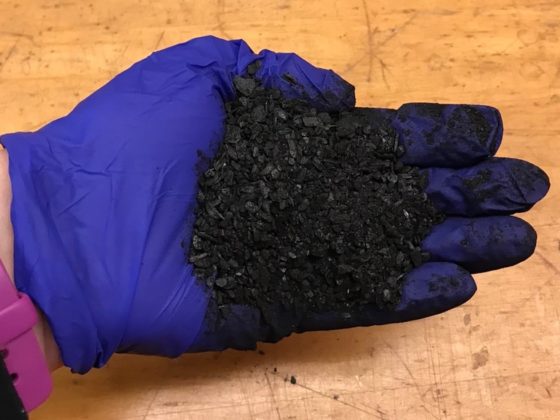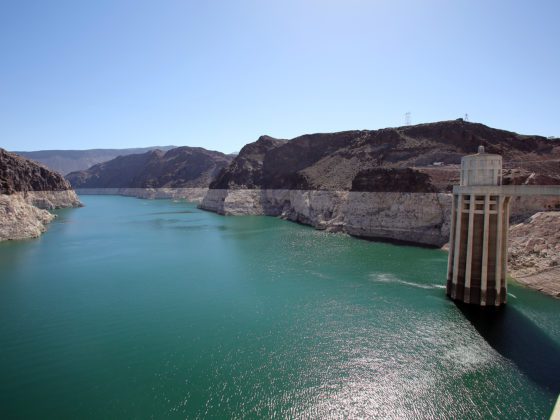As part of this year’s World Water Events (6th edition), the Global Water Initiative organized a panel on the Chesapeake Bay and how it has been affected by climate change. UVA’s own Larry Band emphasized how extreme weather events that trigger non-point source pollution (i.e. runoff from agricultural fields as well as storm water from cities) made for the high variance in nitrogen and phosphorus levels, even when the trend in the overall levels was encouraging for the Chesapeake Bay. Ellen Gilinsky, who has had a long career in environmental policy (including at Environmental Protection Agency), pointed towards the water quality challenges more generally under the current administration, and how some states, including Virginia, are trying to step in where federal policies are retreating. The third speaker on the panel was Earl Swift, a Virginia-based journalist and prolific author of hundreds of articles and seven books, who has been a Residential Fellow at the University of Virginia. Earl Swift talked to us about Tangier Island, an island in the Chesapeake Bay that is the focus of his newest book “Chesapeake Requiem: A Year with the Watermen of Vanishing Tangier Island,” see picture above from Earl Swift. We spoke to him afterwards.
Can you describe Tangier Island and what is happening to it as the climate changes?
Tangier is a speck of mud and marsh in the middle of the bay’s widest point, a dozen miles from the nearest mainland port. It was settled during the American Revolution, and is home today to roughly 460 descendants of those early settlers—who, like their forebears, earn their keep by crabbing and oystering in small boats. Since the mid-19th century, however, the very water that sustains them has been stealing the ground from under their feet. Tangier has lost two-thirds of its area, or more than eight acres per year, and it wasn’t big to begin with. This land loss has accelerated over time; while islanders ascribe the cause to wind-driven waves, the acceleration suggests that rising seas are exacerbating the erosive effects of those waves, and in fact the relative sea-level rise in the lower Chesapeake is among the highest on Earth. Today, high tides not only climb the island’s edges, but percolate up through the ground in Tangier’s middle. The lead author of a 2015 study of the island’s dilemma reckons that if unchecked, the island will be uninhabitable within twenty-five years. That estimate strikes me as optimistic.
 Softshell crab (photo Earl Swift)
Softshell crab (photo Earl Swift)
What could be done about the island’s inundation? Are Tangier watermen doing anything about it, or expecting that anything could be done about it?
Saving the island would involve such heroic government effort and spending that it is difficult to imagine it happening. But it is possible. The Army Corps of Engineers’ Norfolk District has floated the long-shot possibility that Tangier could be restored in a fashion already undertaken at Maryland’s Poplar Island, a once-thriving bay community that saw similar land loss through most of the 20th century. If the concept comes to pass, Tangier would be rebuilt in riprap-edged cells, which would be filled with dredge spoils. As at Poplar, the project would be aimed at providing habitat for wildlife; the town presumably would be saved as a byproduct. Again, this is a long shot. The costs involved would be a tough sell to the Army, let alone Congress.
Tangiermen are deeply religious people. Over the 240-odd years that they’ve occupied their island, one hurricane after another has spared the place, and they’ve ascribed their salvation to the power of their prayer. Epidemics have staggered them, but failed to wipe them out, and again, they have credited their faith for their survival. Likewise, the seafood fisheries on which they depend have many times collapsed, only to rebound. The sum of these close calls is that islanders have come to see themselves as an anointed people, armored against disaster by divine protection. So while Tangier’s existential dilemma causes them a great deal of anxiety, I don’t think they’re panicking. They’re praying, instead, and they’re confident that their prayers will be answered.
 Tangier Island (photo Earl Swift)
Tangier Island (photo Earl Swift)
You spent one year with the waterman of Tangier Island. Why did you decide to spend a year with them? What were some of your takeaways from spending a year there? Why did you want to tell the story of Tangier Island?
Because Tangier is likely to be the first full-fledged American town that will succumb to the effects of climate change, and as such it requires us to confront some deeply unpleasant truths. How we respond to Tangier’s situation, or choose not to respond to it, will inform how we approach the next town to face these challenges, and the next, and the next.
We will not have the time, money, or technical means to save all the imperiled places along our coasts, so we must develop a rubric by which we decide which to surrender to the sea. Building that rubric will be a truly ugly process. Given our polarized politics, it is hard to figure how we’ll pull it off. But it’s necessary if we’re to proceed in any rational fashion, if there’s to be any fairness in our response to this unfolding disaster.
My takeaway is that Tangier isn’t the ideal first case—it’s tiny, eccentric, and isolated, and its population is in freefall (in part because of its physical challenges, which discourage newcomers). But we don’t get to pick our first case. Mother Nature has done that for us. So I figured it was important to go there and experience this first case as its fate becomes ever more clear. Its end times.





